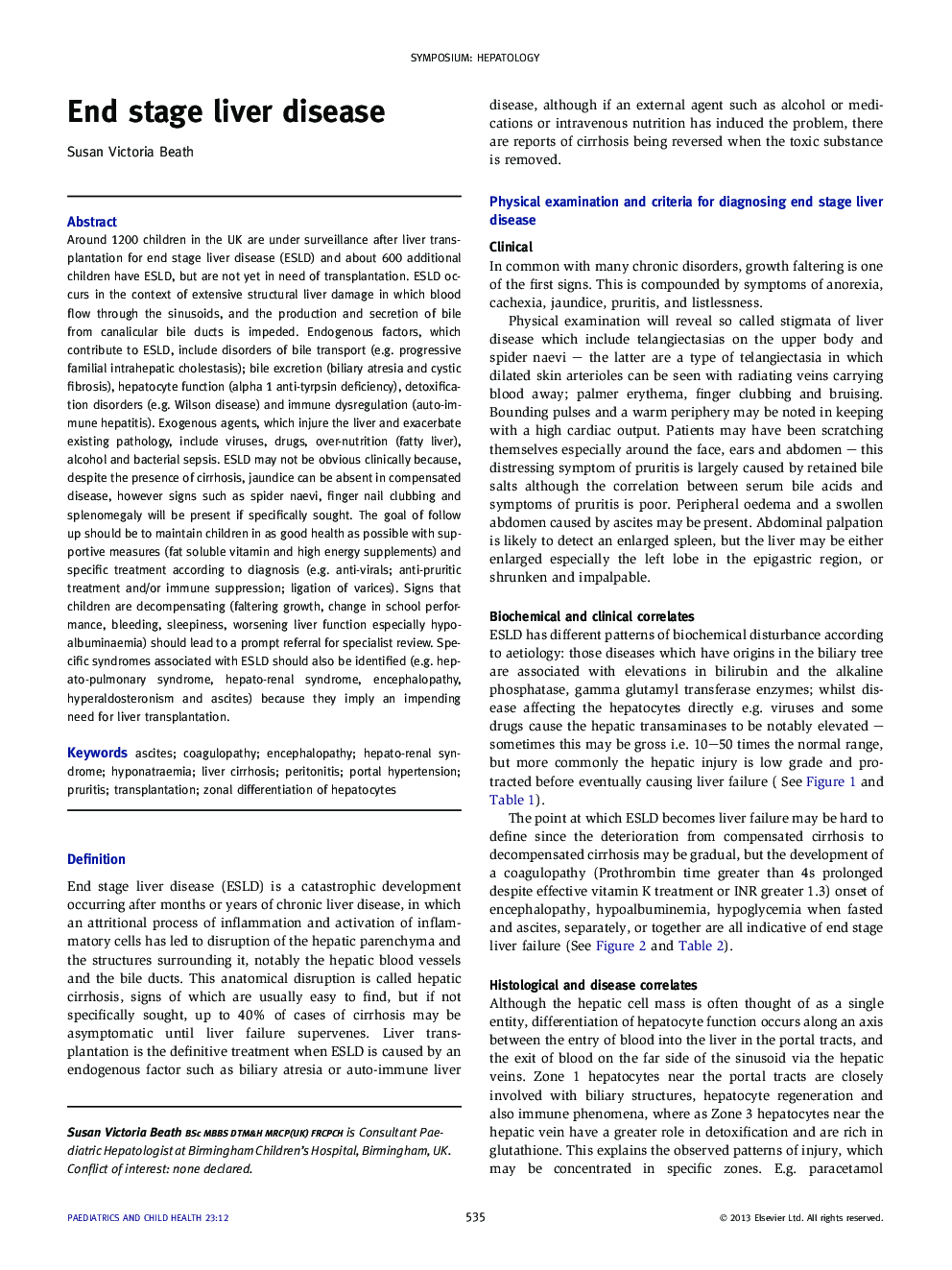| کد مقاله | کد نشریه | سال انتشار | مقاله انگلیسی | نسخه تمام متن |
|---|---|---|---|---|
| 4172144 | 1275723 | 2013 | 10 صفحه PDF | دانلود رایگان |
عنوان انگلیسی مقاله ISI
End stage liver disease
دانلود مقاله + سفارش ترجمه
دانلود مقاله ISI انگلیسی
رایگان برای ایرانیان
کلمات کلیدی
موضوعات مرتبط
علوم پزشکی و سلامت
پزشکی و دندانپزشکی
پریناتولوژی (پزشکی مادر و جنین)، طب اطفال و بهداشت کودک
پیش نمایش صفحه اول مقاله

چکیده انگلیسی
Around 1200 children in the UK are under surveillance after liver transplantation for end stage liver disease (ESLD) and about 600 additional children have ESLD, but are not yet in need of transplantation. ESLD occurs in the context of extensive structural liver damage in which blood flow through the sinusoids, and the production and secretion of bile from canalicular bile ducts is impeded. Endogenous factors, which contribute to ESLD, include disorders of bile transport (e.g. progressive familial intrahepatic cholestasis); bile excretion (biliary atresia and cystic fibrosis), hepatocyte function (alpha 1 anti-tyrpsin deficiency), detoxification disorders (e.g. Wilson disease) and immune dysregulation (auto-immune hepatitis). Exogenous agents, which injure the liver and exacerbate existing pathology, include viruses, drugs, over-nutrition (fatty liver), alcohol and bacterial sepsis. ESLD may not be obvious clinically because, despite the presence of cirrhosis, jaundice can be absent in compensated disease, however signs such as spider naevi, finger nail clubbing and splenomegaly will be present if specifically sought. The goal of follow up should be to maintain children in as good health as possible with supportive measures (fat soluble vitamin and high energy supplements) and specific treatment according to diagnosis (e.g. anti-virals; anti-pruritic treatment and/or immune suppression; ligation of varices). Signs that children are decompensating (faltering growth, change in school performance, bleeding, sleepiness, worsening liver function especially hypo-albuminaemia) should lead to a prompt referral for specialist review. Specific syndromes associated with ESLD should also be identified (e.g. hepato-pulmonary syndrome, hepato-renal syndrome, encephalopathy, hyperaldosteronism and ascites) because they imply an impending need for liver transplantation.
ناشر
Database: Elsevier - ScienceDirect (ساینس دایرکت)
Journal: Paediatrics and Child Health - Volume 23, Issue 12, December 2013, Pages 535-544
Journal: Paediatrics and Child Health - Volume 23, Issue 12, December 2013, Pages 535-544
نویسندگان
Susan Victoria Beath,